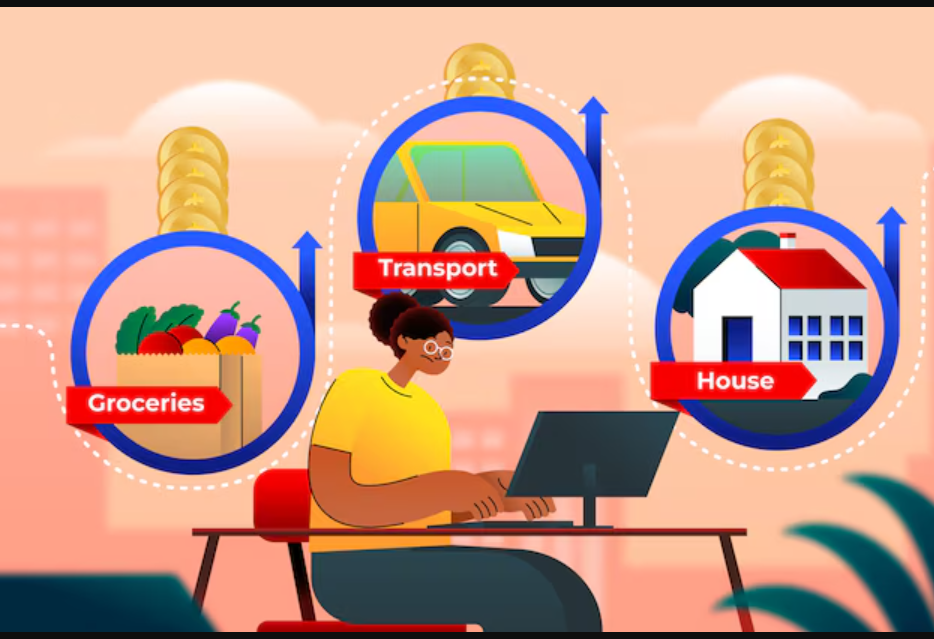Are you looking for a way to generate passive income without much effort? Investing in land could be your perfect solution. Passive income from land offers a smart, low-maintenance investment opportunity with the potential for steady returns. Whether you’re interested in leasing your property for agriculture, recreational use, or renewable energy projects, land can provide consistent income streams. In this blog, we’ll explore the best ways to earn passive income from land, and how you can start building a profitable, long-term income strategy. Keep reading to learn more about how land can work as an income source.
What is Passive Income from Land?
Passive income refers to earnings you make with minimal effort after the initial investment. It’s a way to generate money without actively working for it. When it comes to land, this type of income is possible because land can be used in many different ways. You can rent it, lease it, or even sell it at a profit in the future. This makes land a valuable asset for anyone looking to earn passive income.
How Land Provides Passive Income
Land can generate income in several ways, including:
Leasing Land for Agriculture: Farmers or ranchers may pay to use the land for crops or livestock.
Recreational Leasing: It can lease land for hunting, fishing, or camping.
Timber Production: If there are trees in the land, it can be leased to companies that harvest timber.
Solar or Wind Energy: Some landowners lease their land to energy companies to build solar or wind farms.
Cell Tower Leasing: Telecom companies often pay landowners to place cell towers on their property.
These are just a few ways land can create a passive income stream.

Why Invest in Land for Passive Income?
Land is one of the safest and most reliable investments. Unlike stocks or bonds, land doesn’t lose value overnight. The demand for land, especially in growing areas, continues to rise. Additionally, it’s a tangible asset that you can see and touch. Unlike other forms of passive income, such as online businesses or stocks, land does not require constant monitoring. After setting up a lease or contract, you can sit back and enjoy the income.
Here are a few key reasons why land is a great investment for passive income:
Low Maintenance: Once land is leased or rented out,there isn’t much to do. Unlike rental properties, there’s no need for ongoing maintenance or dealing with tenants.
Appreciation Over Time: Land typically increases in value over time, making it a great long-term investment.
Diversification: Adding land to a portfolio diversifies the investment strategy, which can help protect from market volatility.
Ways to Generate Passive Income from Land
There are several ways to earn passive income from land. Below, we’ll discuss the most popular and effective strategies:
1. Leasing Land for Agriculture
Leasing land for agriculture can provide steady passive income, especially if their land has fertile soil. By renting land, you can receive regular payments through fixed rent or a crop share. In a crop share, you get a percentage of the harvest, while the farmer handles the planting and care. This allows you to earn without managing the farming work.
However, several factors should be considered. First, your land must be suitable for agriculture, with the right soil and climate. It also needs to invest in basic infrastructure like fences, irrigation, or access roads. Weather conditions, such as droughts or floods, can affect the harvest’s value.
It’s important to include these risks in lease agreements to protect yourself. While agricultural leasing offers reliable income, it requires careful planning and awareness of potential challenges. With the right setup, leasing your land can be a profitable, hands-off option.
2. Recreational Leasing
Recreational leasing is an excellent way to earn income from unused land.It can lease land for activities like hunting, fishing, hiking, camping, or off-roading. This option requires minimum investment, like adding trails or parking spaces. It allows you to make money without developing your land.
One major benefit is flexibility in leasing terms. You can lease seasonally, for hunting or fishing, or year-round for hiking. However, there are things to consider.There may need permits or licenses for some activities, and liability insurance to protect against accidents.
It’s important to research the demand for these activities in the area. Some places may not attract enough visitors to make it profitable. While recreational leasing offers steady income, managing seasonal demand is necessary. You also need to ensure your land is accessible and well-maintained.
Overall, recreational leasing is a smart way to use your land with minimal effort and risk.
3. Timber Production
Leasing land for timber production can provide a steady income if your property has mature trees. Timber is valuable, and many companies will pay to harvest it. Timber leases often offer large up-front payments and long-term passive income. This is great for landowners seeking stable income without much effort.
However, a few important factors need consideration. Timber leases work best for land with mature, marketable trees. Younger trees may not provide enough value. It’s essential to hire an expert to assess the timber’s quality. A forestry consultant can help determine its value and create a sustainable plan.
Timber leases often last for years, offering continuous income. It’s important to evaluate the lease terms carefully to protect your land. A well-drafted agreement ensures the land remains in good condition.
Overall, timber leasing is a low-maintenance way to earn income. However, it requires careful planning to maximize returns and protect your property.

4. Solar and Wind Farm Leasing
Leasing the land for solar panels or wind turbines is a smart way to earn income. As demand for renewable energy grows, energy companies are willing to pay to build solar or wind farms on your property. This can provide you with steady, passive income. Once the lease is signed, the company handles installation, maintenance, and operation, requiring minimal effort from you.
However, there are a few things to consider. First, you need to find a suitable energy company. This may involve some research and negotiation. Also, the location of your land is crucial. Solar farms need areas with plenty of sunlight, while wind farms need locations with strong, consistent wind.
If your land meets these conditions, leasing it for renewable energy is a win-win. You earn income, and the energy company contributes to green energy. By choosing the right location and working with a trusted company, you can enjoy a reliable income. At the same time, you help support the growth of sustainable energy.
5. Cell Tower Leasing
Telecom companies are always searching for locations to build cell towers. If your land is in a good spot, you can lease it for this purpose. Leasing land for a cell tower typically involves long-term contracts, providing steady income. Once the tower is built, the telecom company takes care of maintenance, so you don’t have to.
However, there are things to think about. First, ensure your land is in an area with strong network coverage. Telecom companies prefer places with good signals and high traffic. Also, while leasing land can bring in money, consider the impact on your property’s appearance. Cell towers are large, and they may affect the look of your land, especially if it’s in a scenic or residential area.
In conclusion, leasing land for a cell tower can be a good choice if your land is in the right spot. The steady income can outweigh any visual impact, especially if the location is ideal. Make sure to carefully evaluate all factors before signing a lease.
How to Find Tenants for Your Land
When we decide to generate passive income from land, the next step is finding tenants. Here are some tips for attracting tenants:
Advertise Online: Use online platforms like Craigslist, Zillow, or local listing websites to advertise your land for lease. Many people looking for land will start their search online.
Reach Out to Local Businesses: If we are interested in leasing land for farming or timber, contact local businesses that may need space.
Use a Property Management Company: If we do not know how to lease land,we can hire a property management company to handle everything.
Advantages and Risks of Passive Income from Land
While passive income from land offers many benefits, it also comes with risks. Let’s break down the advantages and risks of land investments.
Advantages
Stable Investment: Land typically appreciates over time, providing a reliable long-term investment.
Low Maintenance: Once your land is leased, it requires little management.
Diversification: Adding land to your investment portfolio can protect you from the volatility of other asset classes like stocks.
Risks
Initial Investment Cost: Buying land can be expensive, especially in high-demand areas.
Market Fluctuations: Land values can fluctuate based on market conditions, especially in areas experiencing economic downturns.
Tenant Issues: You may encounter problems with tenants, such as late payments or breaches of contract.
How to Maximize Your Passive Income from Land
Maximizing passive income from land involves choosing the right lease terms and maintaining a good relationship with tenants. Here are some tips:
Set Clear Terms: Make sure that the lease agreement is clear and fair. Include specifics about the rental amount, duration, and responsibilities of both parties.
Monitor the Lease: Even though you’re earning passive income, it’s important to periodically check in with your tenants to ensure everything is running smoothly.
Explore Multiple Income Streams: If possible, try to find multiple ways to generate income from your land. For example, you could lease your land for agriculture while also allowing hunting in the off-season.
Conclusion: The Potential of Passive Income from Land
Land is one of the best investments one can make if you’re looking for passive income. With a variety of leasing and income-generating options, owning land can provide a steady stream of income with minimum effort. Whether you’re leasing for agriculture, recreational use, timber, or renewable energy.Land can be an asset that keeps paying for years to come.
Remember that, like any investment, land comes with its own set of risks. However, with careful planning and good management, you can turn your land into a reliable source of passive income.
If you’re interested in earning passive income from land, now is the perfect time to start. Look into your land’s potential and explore the options for leasing. With the right approach, land can be a lucrative investment.
Table: Ways to Generate Passive Income from Land
| Method | Potential Income | Benefits | Risks |
| Leasing for Agriculture | Steady monthly income | Minimal involvement from landowner | May require land preparation |
| Recreational Leasing | Seasonal/Year-round rent | Low infrastructure cost | May need liability insurance |
| Timber Production | Large, up-front payment | Long-term lease agreements | Land must have mature trees |
| Solar/Wind Farm Leasing | Steady long-term income | Contributes to green energy | Need to find the right company |
| Cell Tower Leasing | Long-term lease payments | Minimal maintenance | May affect land aesthetics |
By choosing the right method and keeping track of your land’s potential, you can make a smart investment in passive income.







Comments(0)